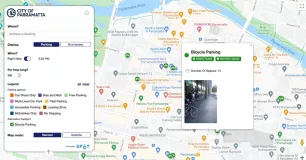
North Carolinas Research Triangle continued its work on ‘data sharing for mobility’ in its third virtual working session on October 27, 2021. You can find the recording of the Webinar here. This collaborative acceleration program produced by the Smart Cities Council is sponsored by Bridgestone and SAS Institute.
Future of Mobility in North Carolina’s Research Triangle
The region which includes NC RT has a long-term vision for mobility in the region. Goals include:
- Support Vision Zero (no pedestrian deaths)
- Support reliability across an integrated transportation network
- Enhance network mobility
- Improve multimodal connectivity and equitable access
- Improve, monitor, and manage assets
- Support economic vitality
TJCOG is working with the two Metropolitan Planning Organizations (‘MPO’), NC DoT and the regional governments participating in this collaborative acceleration on a plan for an intelligent transportation system for the region. Their first meeting was in October 2021.
Signal Systems (Data Sharing) Management
The first step in ITS and which the region recognizes, is - (i) coming to agreement about signals systems wide management (sharing of data) and (ii) consolidating signal systems management. The Council’s collaborative acceleration program is specifically targeting these two goals as deliverables for our efforts.
Where’s the Data
Key to the discussion during this session was insights provided by Mathew Day from the TJCOG Council of Governments and Bonnie Dahany, the Chief Data Officer for Wake County. Both reviewed existing data collection for the 6500 miles of state and city-maintained roads in Wake County. Current data sources include -
- Annual Average Daily Traffic maintained by the North Carolina Dept. of Transportation (‘NC DoT,’) which includes about 20 years of data
- Crash data also compiled statewide by NCDOT
- Traffic cameras along major highways, coordinated by NCDOT Traffic Management Center
- Various probe data sources (INRIX/HERE through Eastern Transportation Coalition; Streetlight; etc.)
Predictive forecasting is provided by the Triangle Regional Travel Demand Model (TRM.)
What Data is Still Needed?
On first blush, the speakers agreed that possible new data sources included Apple, Google, Lyft and Uber and possibly government and commercial fleet data collection. There was also agreement that there was a lack of how people interact with transportation infrastructure when not using cars (pedestrian and cyclist for example) - was absent.
Collaborative Acceleration Direction
To date, the work has been oriented towards collecting the perspective of local communities.
- On November 10, the session will be focused on NC DoT pilots provided by WayCare Tech and Streetlight Data and the mechanics of data sharing with insights from Carlos Rivero, the Chief Data Officer for Virginia and Bonnie Danahy, Chief Data Officer, Wake County. Register here.
- On November 24, the program will focus on benchmarks and goals. Register here.
- Finally, on December 9, 2021 the participating parties and an invite list of experts will meet ‘in-person’ to discuss data inventories, use cases and the mechanics of consolidating signal management.
If you are interested in participating in the ‘invite-only’ hybrid scoping session on December 9 - email Philip.Bane@smartcitiescouncil.com



